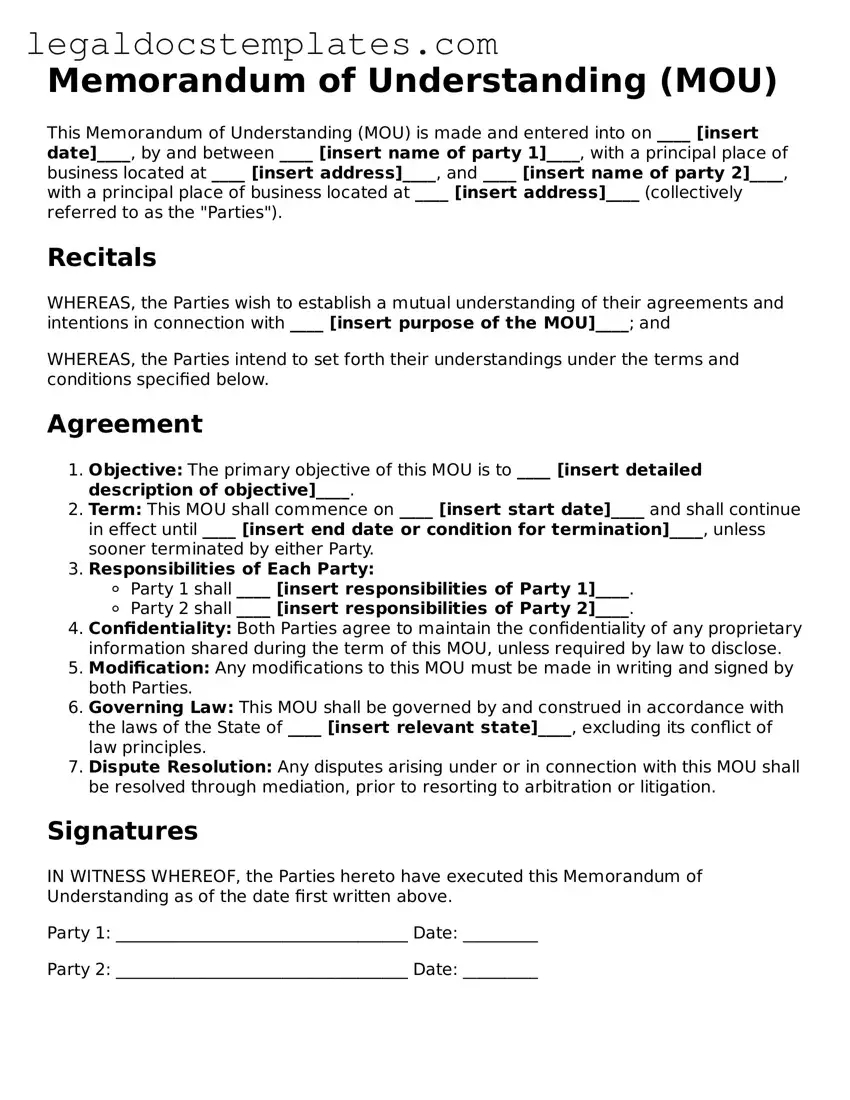A Memorandum of Understanding (MoU) shares similarities with a Letter of Intent. Both documents act as preliminary agreements between parties, setting the foundation for future negotiations or agreements. A Letter of Intent, much like an MoU, outlines the basic terms and conditions of a deal before a formal agreement is reached. Though neither are typically legally binding, they demonstrate a serious commitment to move forward.
Another document similar to an MoU is a Partnership Agreement. This type of agreement also outlines the roles, responsibilities, and terms between parties. However, a Partnership Agreement usually goes a step further by establishing legally binding obligations and details regarding profit sharing, liability, and operational management among partners, making it more comprehensive than an MoU.
An Agreement to Agree is yet another document related to an MoU in its purpose to outline the intention of two parties to come to a formal agreement in the future. It indicates that current negotiations are in good faith but recognizes that final terms will be decided later, much like an MoU. However, the enforceability of an Agreement to Agree can be uncertain since it essentially promises future agreement.
The Heads of Agreement document is similar to an MoU in that it outlines the preliminary understanding between parties before finalizing a deal. Often used in international transactions, it acts like an MoU by signaling the intention to proceed but does not bind the parties legally, except in certain conditions where confidentiality and exclusivity are concerned.
A Term Sheet is akin to an MoU in its function of outlining the key aspects of a deal before a formal agreement is executed, commonly used in the context of venture capital or fundraising negotiations. While a Term Sheet is not typically legally binding in its entirety, certain parts, such as confidentiality clauses, may be. This makes it similar yet distinctively different from an MoU based on its specific application and partially binding nature.
The Preliminary Agreement, much like the MoU, is used to record the intentions of parties before entering into a binding contract. It sets out the terms and conditions upon which the formal agreement will be based. Although there is a commitment to negotiate in good faith, the Preliminary Agreement itself does not compel the completion of a subsequent formal agreement, reflecting the non-binding essence of an MoU.
Letters of Agreement share a relation with MoUs because they document the understanding between two or more parties and can serve as a precursor to a more detailed, binding contract. Unlike an MoU, a Letter of Agreement often includes detailed terms and conditions of the arrangement and might be binding, depending on its wording and context, making it a more immediate commitment.
The Joint Venture Agreement is somewhat comparable to an MoU as both set the stage for a cooperative endeavor between two or more parties. However, a Joint Venture Agreement is a binding contract that outlines the specifics of the joint operation, including contributions, management roles, and profit distribution. In contrast, an MoU merely signifies the intent to explore a joint venture possibility.
Finally, Confidentiality Agreements or Non-Disclosure Agreements (NDAs) bear resemblance to MoUs in their preliminary approach to formalizing relationships. They specifically focus on the protection of proprietary information shared during negotiations. While an MoU might include confidentiality terms, an NDA exclusively binds parties to secrecy regarding any disclosed information, showing a narrower focus compared to the broader intentions captured in an MoU.
